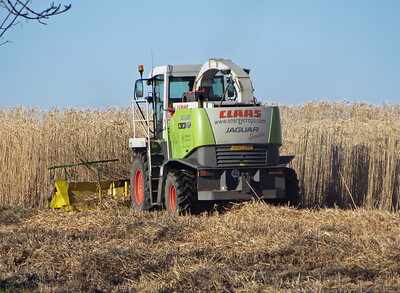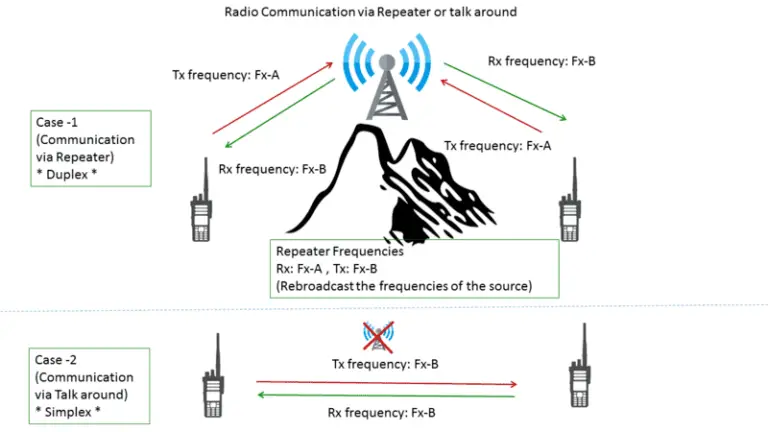5 Advantages of Biomass as a Renewable Energy Source Explained
Advantages of biomass as a renewable energy source are; carbon neutrality, renewable supply, energy transition role, waste diversion and reduction, and low cost.
This article discusses the advantages of biomass, as follows;
1). Carbon Neutrality (as one of the Advantages of Biomass as a Renewable Energy Source)
When used as a renewable fuel, biomass can be described as being 'carbon neutral'. This is same for all energy derivatives of biomass; including biofuel and bioenergy.
Bio energy is carbon neutral because although biomass and its derivatives released carbon dioxide into the atmosphere when combusted, this carbon dioxide is still reabsorbed by photosynthesis and soil sequestration as biomass is produced through plant growth.
The outcome of the scenario described above is a continuous loop of natural carbon recycling that neither increases nor decreases the net volume of CO2 in the atmosphere or entire ecosystem.
Biofuels are 100% carbon neutral in a basic technical sense, because all the carbon emissions which they produce in their lifetime will be reabsorbed subsequently as plant biomass is regenerated [5].
Biomass reduces carbon emissions as an energy resource, compared to other resources like coal and gasoline. However, the extent to which biomass reduces carbon emissions nd exhibits its carbon neutrality, is conditional.
Studies have been conducted to back the argument against the sustainability of energy from biomass, and most of these are based on estimations that its instantaneous emissions are high [10] [13].
This point of view is based on current conditions of environmental management, and only show that the consumption of biomass for energy around the world, is generally higher than the rate at which biomass is replaced through reforestation and afforestation, among other similar practices.
Carbon neutrality cannot be achieved for any energy resource under conditions of deforestation, desertification, unsustainable urbanization, and general reduction of vegetation cover. For biomass to exhibit its beneficial carbon neutrality attribute, there must be measures taken to ensure that consumed resources are equally and effectively replaced.
2). Renewable Supply
In addition to being carbon-neutral, another of the greatest advantages of biomass is the fact that its is naturally renewable.
Biomass can increase energy supply drastically if its renewable attribute is exploited, by setting up artificial forests and other systems that generate biomass abundantly, on a continuous basis.
Renewable energy from biomass is essential to the development of green economies, and can go a long way to augment energy from other renewable resources like solar, geothermal and wind [12]. It can also be used to address the issue of energy shortages from fossil fuel scarcity [8].
Sources of biomass include plant and animal matter from forest management and agricultural activities, commerce and industry. For the purpose of energy production, plant biomass is more prominent. These multiple sources can be exploited to produce a reliable stream of energy resources.

3). Role in Energy Transition and Backup (as one of the Advantages of Biomass as a Renewable Energy Source)
Because biomass is accompanied by positive prospects of minimal environmental impact and climate change mitigation, its adoption as a renewable energy source can be very helpful to facilitate the energy transition process away from fossil fuels to more sustainable alternatives [4].
Like fossil fuels, biomass is a versatile energy resource, whose possible uses range from electricity generation and industrial heating to core domestic application.
Also, biomass can be converted or transformed to other bio-based materials like biogas and biodiesel, which are more flexible to be used with energy-extraction systems like combustion engines.
Methods or types of biomass transformation include; physical, chemical, mechanical and biochemical/biological conversion [1] [2].
Introducing biomass into the energy resource base can increase versatility of options. It can also serve as a backup resource for fossil fuels, thereby increasing energy security.

4). Waste Diversion and Reduction
Energy-based utilization of biomass can be beneficial in controlling environmental waste, when waste from human activities is used as a source of biomass for energy production.
Biomass energy reduces waste by converting the organic fraction of this waste to useful energy that is utilized to generate electricity and for heating.
An important concept with respect to the use of biomass an a renewable energy source, is waste-to-energy.
This concept encompasses the transformation of organic waste to energy through methods like anaerobic digestion, pyrolysis and gasification.
Each of these methods can reduce organic waste volume drastically, and converts the waste to less-harmful residue like biochar, which is even useful to the environment for purposes like soil conservation.
The usefulness of biomass energy production to reduce waste can be understood better when we consider that a single urban area can consume up to 2,800 tons of waste to generate electricity on a daily basis [7].
In parts of the world where waste is a major cause of environmental pollution, bioenergy development can be a viable approach to mitigate such problems [9].
In addition, waste-to-energy can be implemented as a two-fold-beneficial strategy for waste management, especially where alternative approaches are expensive [6].
5). Low Cost (as one of the Advantages of Biomass as a Renewable Energy Source)
Biomass is cheaper than natural gas and petroleum among other fossil fuels, y reason of the fact that it is renewable.
The cost of biomass energy ranges from $0.06 to $0.29, when estimated based on levelized cost of energy (LCOE) metrics. This value comes from the averages of multiple locations, biomass sources and types of biorefineries or biomass power plants (as of 2023).
With further modification, development and adoption, the cost of biomass for energy production can reduce further, significantly.
Biomass is cheap compared to non-renewable energy resources because it can be produced abundantly in many parts of the world. In fact, biomass production potential is low only in areas where ecosystem productivity is hindered by conditions like desertification, and such areas are not known to be densely populated or high in energy demand.
Because of the widespread productivity of biomass, bioenergy can be generated locally, unlike fossil fuel resources that often have to be imported at high cost [3].
The versatility, multiplicity of options, and economic flexibility which can all be induced by introducing biomass into the energy market, can help to make energy more affordable [12].
The only challenge as of yet with regards to the economics of bioenergy is the cost of biomass power plant installation, which could be higher than $4,000. However, these challenges can also be resolved by large-scale adoption and use of bioenergy resources and technologies [11].
Conclusion
Advantages of biomass as a renewable energy source are;
1. Carbon Neutrality
2. Renewable Supply
3. Role in Energy Transition and Backup
4. Waste Diversion and Reduction
5. Low Cost
References
1). Acaru, S. F.; Abdullah, R.; Lai, D. T. C.; Lim, R. C. (2022). "Hydrothermal biomass processing for green energy transition: insights derived from principal component analysis of international patents." Heliyon. 2022 Sep 22;8(9):e10738. Available at: https://doi.org/10.1016/j.heliyon.2022.e10738. (Accessed 13 February 2023).
2). Balaman, S. Y.; Selim, H. (2013). "A review on the methods for biomass to energy conversion systems design." Renewable and Sustainable Energy Reviews 25:420–430." Available at: https://doi.org/10.1016/j.rser.2013.05.015. (Accessed 13 February 2023).
3). Benti, N. E.; Gurmesa, G. S.; Argaw, T.; Aneseyee, A. B.; Gunta, S.; Kassahun, G. B.; Aga, G. S.; Asfaw, A. A. (2021). "The current status, challenges and prospects of using biomass energy in Ethiopia." Biotechnol Biofuels. 2021 Oct 26;14(1):209. Available at: https://doi.org/10.1186/s13068-021-02060-3. (Accessed 13 February 2023).
4). Colla, M.; Blondeau, J.; Jeanmart, H. (2022). "Optimal Use of Lignocellulosic Biomass for the Energy Transition, Including the Non-Energy Demand: The Case of the Belgian Energy System." Frontiers in Energy Research 10:802327. Available at: https://doi.org/10.3389/fenrg.2022.802327. (Accessed 13 February 2023).
5). Hanaki, K.; Portugal-Pereira, J. (2018). "The Effect of Biofuel Production on Greenhouse Gas Emission Reductions." In: Takeuchi, K., Shiroyama, H., Saito, O., Matsuura, M. (eds) Biofuels and Sustainability. Science for Sustainable Societies. Springer, Tokyo. Availanle at: https://doi.org/10.1007/978-4-431-54895-9_6. (Accessed 13 February 2023).
6). Iakovou, E.; Karagiannidis, A.; Vlachos, D.; Toka, A.; Malamakis, A. (2010). "Waste biomass-to-energy supply chain management: a critical synthesis." Waste Manag. 2010 Oct;30(10):1860-70. Available at: https://doi.org/10.1016/j.wasman.2010.02.030. (Accessed 13 February 2023).
7). Jiang, Y.; Van der Werf, E.; Van Ierland, E. C.; Keesman, K. J. (2017). "The potential role of waste biomass in the future urban electricity system." Biomass and Bioenergy 107:182-190. Available at: https://doi.org/10.1016/j.biombioe.2017.10.001. (Accessed 13 February 2023).
8). Khai, N. M. (2021). "Renewable energy from biomass surplus resource: potential of power generation from rice straw in Vietnam." Springer Nature, Scientific Reports 11(1). Available at: https://doi.org/10.1038/s41598-020-80678-3. (Accessed 13 February 2023).
9). Qin, L.; Wang, M.; Hu, J. F.Z.; Wei, Y.; Zhou, X.; He, Z. (2021). "Towards Circular Economy through Waste to Biomass Energy in Madagascar." Hindawi, Complexity 2021(3):1-10. Available at: https://doi.org/10.1155/2021/5822568. (Accessed 13 February 2023).
10). Simon, F. (2020). "Not all biomass is carbon neutral, industry admits as EU reviews policy." Available at: https://www.climatechangenews.com/2020/07/14/not-biomass-carbon-neutral-industry-admits-eu-reviews-policy/. (Accessed 13 February 2023).
11). Sobamowo, G.; Ojolo, S. J. (2018). "Techno-Economic Analysis of Biomass Energy Utilization through Gasification Technology for Sustainable Energy Production and Economic Development in Nigeria." Hindawi, Journal of Energy 2018(1):1-16. Available at: https://doi.org/10.1155/2018/4860252. (Accessed 13 February 2023).
12). Styles, A.; Gawel, E.; Szarka, N.; Lauer, M.; Lenz, V.; Ortwein, A.; Tafarte, P.; Eichhorn, M.; Thrän, D. (2018). "Contributions of flexible power generation from biomass to a secure and cost-effective electricity supply—a review of potentials, incentives and obstacles in Germany." Springer, Energy, Sustainability and Society 8(1). Available at: https://doi.org/10.1186/s13705-018-0157-0. (Accessed 13 February 2023).
13). Wang, Y.; Guan, W.; Liu, L.; Ma, X. (2020). "Biomass energy consumption and carbon neutrality in OECD countries: Testing pollution haven hypothesis and environmental Kuznets curve." Front. Environ. Sci., 24 October 2022. Sec. Environmental Economics and Management, Volume 10 - 2022. Available at: https://doi.org/10.3389/fenvs.2022.975481. (Accessed 13 February 2023).




